The innovators: small family wineries get creative
The pandemic, bushfires and the collapse of the China market have hit wineries hard. But some small family concerns are turning catastrophe into opportunity.
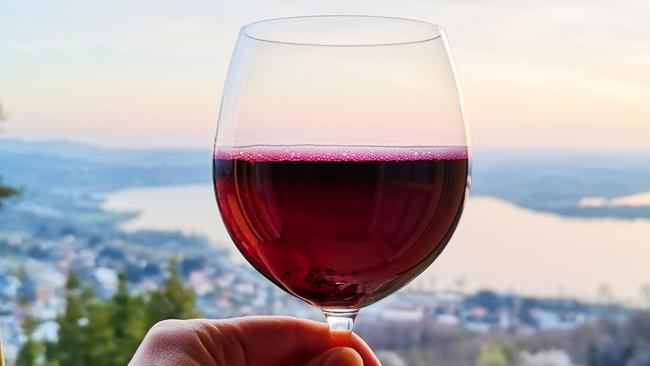
Alba the Brittany spaniel puppy sits under a table at the cellar door playfully chewing on Madeleine Marson’s sneakers. Spring has brought new life and new optimism to Vinea Marson, the family-owned winery in Victoria’s Heathcote region, where 20 years ago Madeleine’s father Mario took a punt that the grapes of his childhood in northern Italy would thrive.
A bocce court is taking shape beside the rows of viognier, sangiovese and nebbiolo, and earthworks for renovations have piled high mounds of the rich, red Cambrian soil that’s made Heathcote synonymous with shiraz. For small wineries especially, selling wine is about selling stories – family journeys wrapped in terroir.
THE LIST: JAMES HALLIDAY’S TOP 100 WINES 2021
The pandemic threatened to silence those stories. Lockdowns cut off that connection with customers, people who’d hear the stories the old-fashioned way, at the cellar door. Trade through pubs, clubs and restaurants disappeared, and for many the loss was compounded in late 2020 when their largest and most lucrative export market, China, slapped prohibitive tariffs on Australian wine.
But some wineries have found new ways to turn catastrophe into opportunity, to innovate, find new markets and future-proof their businesses. From Margaret River to the Mornington Peninsula, Heathcote to the Hunter Valley, family-owned wineries are using the spade of storytelling to dig a way out.
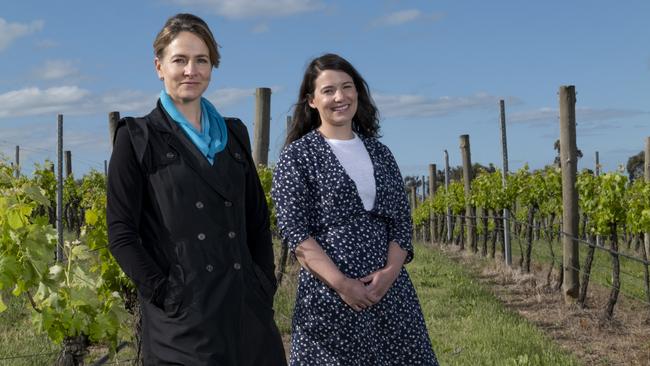
“I remember Mum saying, ‘I can’t do this again,’” says Madeleine Marson. “Can’t do another GFC, another bushfire season, another drought. But this time we just had to be fearless. We had no other option.” It was the unknown that was the hardest, adds Jodi Marsh of nearby Sanguine Estate. “Especially at the start, when we didn’t know when lockdown would end, or what government support we’d get, or even if we’d die if we got the virus. The only thing we knew was that we’d all become separated from our customers. We had to find a way to reconnect.”
Out of collective despair, a new collaboration, Heathcote Women in Wine, was born. Part support group, part co-op, part regional development initiative, the group comprises Marson, Marsh, Tracie Young of Silver Spoon Estate, Emily Kinsman of Armstead Estate, India Munari of Munari Wines and Jess Dwyer of Farmer & the Scientist. Among them are lawyers, business managers, scientists, viticulturalists, winemakers and wordsmiths. Although the wineries are in one sense competitors, the women realised a joint approach was needed. “Suddenly 2800 wineries around Australia were competing,” says Marsh. “So it needed regional collaboration, a holistic approach, in order to gather the masses.”
“We all came at the problem from different angles,” says Marson. “We were different ages and had different skills, but we shared a region, and it was about finding a new way into that region.” Working together freed up time for everyone. One person could study and disseminate the ever-changing Covid regulations. Another could work on promotion. And sharing costs made packaging for collaborative packs affordable. The women created a cellar door trail linking the wineries, with bookings co-ordinated through one website. In July this year the group held its first dinner, a sold-out event that was nearly scuttled when Melbourne went into lockdown at midnight. They’ve just launched a “12 days of Christmas” advent calendar containing a dozen bottles of wine – two from each winery – so customers can pull out a mystery bottle each night.
And now they plan to start a mentoring program for other women in wine around Australia. “We’ve learnt so much about our business and our industry,” says Marson. “We just got on with it. Yes, it’s hard, but we just faced up to the reality and found a way to push through. What else could we do?”
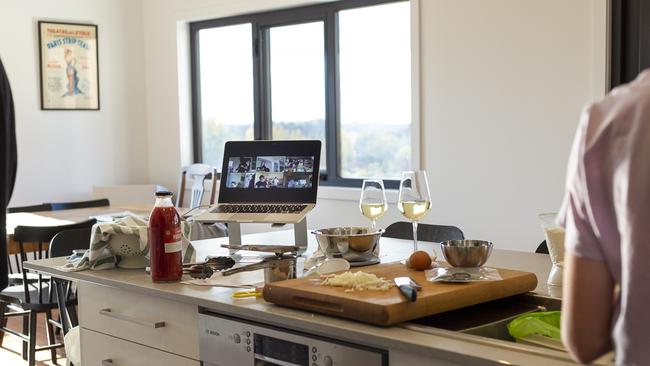
Up in Victoria’s King Valley, wineries have long known the benefits of what’s known there as “coopetition”. This weekend sees the La Dolce Vita Festival celebrate the Italian varietals that tell the alpine valley’s story of immigration and opportunity.
Natalie Pizzini of Pizzini Wines takes me to a high point in their vineyards overlooking the verdant valley floor planted with grapes by the Italian farmers that flocked to Victoria’s High Country after the war. A celebration here is long overdue. The region started 2020 on the back foot, losing virtually all its red wine to smoke taint. “For most of January and February last year our cellar door was closed,” says Pizzini. “Then Covid hit. We knew we had to move quickly.”
The family turned, as they always have when times are tough, to the kitchen. Natalie’s mother Katrina runs a cooking school from the cellar door, and when the trend for online tastings started gathering momentum in lockdown, the Pizzinis decided to take it a step further. “People were stuck at home and yearning for connection, but also to cook,” says Natalie. “So we devised an ingredient pack to teach people how to cook gnocchi at home.”
Soon, Pizzini customers all around Australia were opening packages containing homemade passata, homegrown potatoes, herbs and two bottles of wine. Katrina would be beamed into their kitchen via Zoom, the cooking class finishing with her husband Alfredo giving a wine tasting. “It just took off, it was quite amazing,” says Natalie. “We never dreamt these classes would be as successful as they’ve been, in terms of maintaining a connection with our customers and building new connections with a whole new audience. Everything we do is through food and family, and the passing on of skills. That’s our story.”
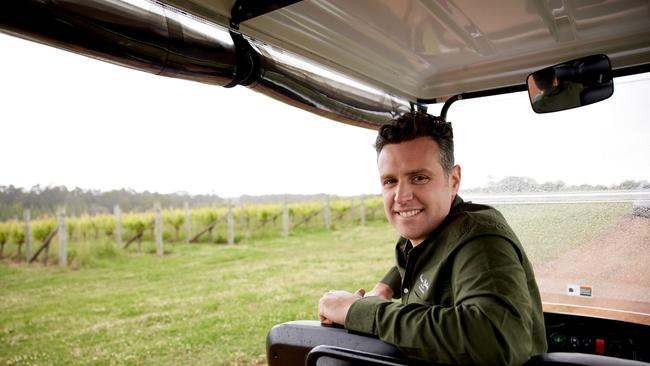
Cellar doors are open again,but they’ll likely never be the same. The old model of free tastings at the bar, with people elbow to elbow, sloshing different wines into different glasses, coming and going at will, was never going to wash in a Covid-safe world. Most tastings are now seated experiences, more structured, and for a small fee. While some customers lament the loss of “splash and dash” tastings at the bar, many wineries say they’ll never go back, with captive customers far easier to engage and more likely to form a long-lasting bond.
Fraser Gallop Estate in Margaret River has gone further than anyone in cultivating a Covid-safe tasting experience that speaks to their story. Hosted by a winemaker, the Taste of the Vineyard package sees groups of up to seven guests driven around the Wilyabrup winery’s gardens in an electric buggy, cruising up the claret ash-lined driveway to an English garden and on to a peaceful glade where a table is set with a linen cloth and fine glassware. After a semillon blanc tasting, it’s back to the buggy, through the chardonnay block to the next glade, where sofas and cushions are laid out under a peppermint tree. Later it’s off to the barrel hall for cheese and cab sav, finishing in the gardens for a dessert-style ice-pressed wine.
Sales and marketing manager Dario Sirotti says this type of experience is where high-end hospitality is heading. “There’s been a massive surge away from hotels and towards private accommodation, places where people know exactly what’s going on and are private,” he says. “This has really flipped our model, and our direct-to-customer sales have increased dramatically. It’s making us a more personal business, which is what it was always designed to be.”
If there’s one thing the pandemic has done for wineries it’s to cement the importance of direct-to-consumer (DTC) sales. A Wine Australia survey showed total value of DTC sales rose 17 per cent in 2020-21 compared with the previous year, and on average those sales now account for a fifth of a winery’s income. Despite the impact of lockdowns, cellar door revenue grew by more than 20 per cent. Visitor numbers may have declined, but those who come are spending more. Rebecca Duffy of Tasmania’s Holm Oak Vineyards says she and husband Tim were working to increase DTC sales well before calamity descended: “We’ve always taken a long-term view of the business, but to be honest we were preparing more for a major weather event than a pandemic!” Duffy says having an established database and a strong social media presence meant they could leverage digital marketing during the worst of the pandemic. The cellar door remains a big focus, and they’re gearing up for a huge summer. “Tassie is seen as a relatively safe place to be, so people are coming with money and buying lots of wine. The challenge has been finding staff.”
While fewer people have been able to visit Tasmania, those who are coming are spending up big. Visits to cellar doors across the state plummeted from 279,139 in 2018-19 to just 78,000 in 2020-21, but the average spend per person increased by nearly $1000.
“One uncertainty is that once overseas travel really gets going we might lose some visitors,” says Duffy. “But we’ll have our loyal customers… I’m a winemaker and Tim’s a viticulturalist; we do it all ourselves, right here. That’s our story, but we need a loyal customer base to hear it. Trying to start from scratch at the start of the pandemic would have been nearly impossible.”
But at least one winery has practically done just that. Ashley Hayden of boutique winery Mr Velvet Ears, near Tyabb on the Mornington Peninsula, and his wife Andrea started producing wine in 2018 and they didn’t have a cellar door. So when Covid hit he used his background in marketing to carve a niche for their burgeoning label, targeting the corporate market, where employers were looking for ways to foster staff morale with online team-building experiences. “Everything was going to Zoom,” Hayden says. “So I guess I saw an opportunity.” The couple got to work filling 100ml sample bottles and creating a tasting mat, wine notes and an online order form to accompany the gentle sales pitch at the end of each session.
Word travelled and the bookings became larger. Deloitte Australia booked them to do a tasting for 150 business partners, including spouses. “Fifty was manageable,” says Hayden. “But 150 meant mass bottling and a whole new approach.” Packaging and posting alone took up the bulk of their days. “A 100ml bottle becomes your world,” laughs Hayden. “But the whole thing just worked – it was what people were after. Because we’d penetrated the corporate market we have those ongoing relationships now. By this time next year we’ll have an actual cellar door and can have real experiences.”
The pandemic forced them to think differently, Hayden says. “It’s actually fast-tracked our business, as horrible as that sounds. It’s forced us to do things we wouldn’t have before, by giving us an avenue to prove our concept in a virtual space. We think we can now do that in a physical space.”
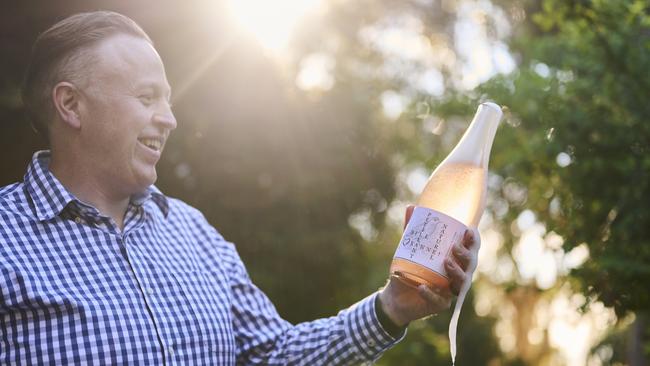
Lark Hill Winery represents the wine of the Canberra region, though their vineyards are in NSW. At 860m, their Bungendore vineyard is one of the highest plantings in the country, while their Murrumbateman vineyard lies 300m lower on completely different soil. The dramatic diversity of terroir tells the story of this region’s wines, which have been dubbed “liquid geography”. But the last two years have seen more a diversity of terror. Smoke taint from the Black Summer bushfires wiped out the region’s entire 2020 vintage, including Lark Hill’s, then lockdown closed cellar doors. Finding himself suddenly with time on his hands, owner Chris Carpenter put together a few tasting packs and offered them to customers via social media. “We were expecting maybe half a dozen orders,” he says. “But when we turned on the computer the next day we had over 300.” The winery printed QR codes linking sample packs to a video tasting that people could take in their own time.
Meanwhile, their cellar door had a complete revamp, and Carpenter says the transition to seated tasting provided a better setting for telling the Lark Hill story. Under the old model people would “race in and out and miss what’s special about place – seated tastings meant we could curate a really meaningful experience. You get a much better feel for the wines and the vineyards. No one says they prefer the old splash and dash model.”
Perhaps the greatest gift the pandemic has given Carpenter is time. “Being closed because of lockdown and not being able to make wine because you’ve lost a vintage does give you a lot of time to think about where you’re going. It’s been almost two years today of not taking anything for granted. It’s taught us a lot.”
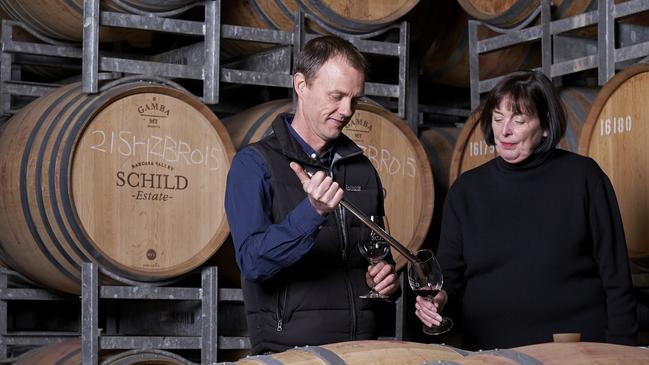
South Australia’s Barossa Valley has taken thebiggest hit from the loss of international wine tourism, and despite avoiding lockdowns the region’s wineries lost their major NSW and Victorian customers for significant chunks of the year. They were also hit hard by the loss of exports to China. Sue Henderson from Schild Estate says the Chinese market previously constituted 15 per cent of revenue; the winery has since beefed up its presence in markets such as Taiwan, Hong Kong, the UK and Greece. “The thing about China was they bought a lot of really expensive wine,” says Henderson. “It was a high-margin market, which other markets don’t quite match.”
Growth in domestic sales has largely sustained Schild Estate: online sales increased by 38 per cent last year and 25 per cent this year, making up for the crash in restaurant and bar sales. “For a winery, direct-to-consumer sales are highly desirable, because you don’t share the margin with anyone. That’s why we’ve seen a big push for wineries to update their databases, redo websites and engage with customers directly. A lot of wineries now have their own YouTube page.” And, like most wineries, the Schild cellar door experience has been given a makeover. “We built a big outdoor patio with amazing views over the valley,” says Henderson. “We also went into bespoke tastings of special, single-site wines, such as our Moorooroo shiraz grown from a vine planted in 1847.”
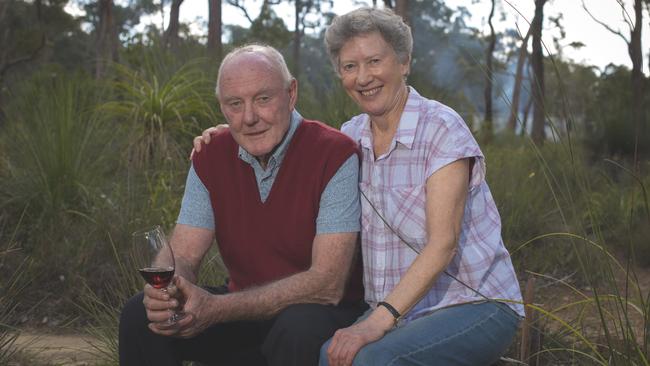
Margaret River’s Happs Wines is another for which the pandemic has been a catalyst for reinvention. “It’s been one big opportunity,” says sales and marketing manager Stacey Lewis. The winery was founded by Erl and Ros Happ, potters who bought the land in 1978 and built their dream home, winery and kiln from mudbricks. The winery produces 45 wines, the most famous being Fuchsia, a sparkling rosé that had its first vintage in 1983 and has been synonymous with west coast summers ever since.
When lockdown closed the winery last March it gave Erl the chance to do something he’d always wanted to try: move the tasting experience into the gardens. A shade structure overlooking a natural amphitheatre has been transformed into a cellar door like no other, where customers peruse shelves of bottles as if at a library, making selections and pouring their own tastings. “People feel empowered,” says Lewis. “Wine can be intimidating, and having someone behind a bar is not always the most comfortable situation. So we’ve opened it up to a different type of customer. You don’t have to know anything about wine.”
Visits to the Happs cellar door are now up 75 per cent compared with 2018-19. The website and the branding were given a makeover and the number of online followers has skyrocketed, with a much younger demographic coming on board. “Fuchsia was a lot of people’s favourite wine when they were young,” says Lewis. “And we’re now seeing mothers bring their daughters, who have just turned 18, and mum wants Fuchsia to be the first wine their daughter tries… The whole vibe of the place has completely changed.”
The soul of the Happs story, however, remains untouched. A resident potter still spins out ceramics in the mudbrick workshop. And take a short wander from the cellar door and you’ll likely find Erl and Ros Happ sitting in their garden, as they have for the past 43 years. In love with clay and wine, and each other. A story that never gets old.

To join the conversation, please log in. Don't have an account? Register
Join the conversation, you are commenting as Logout